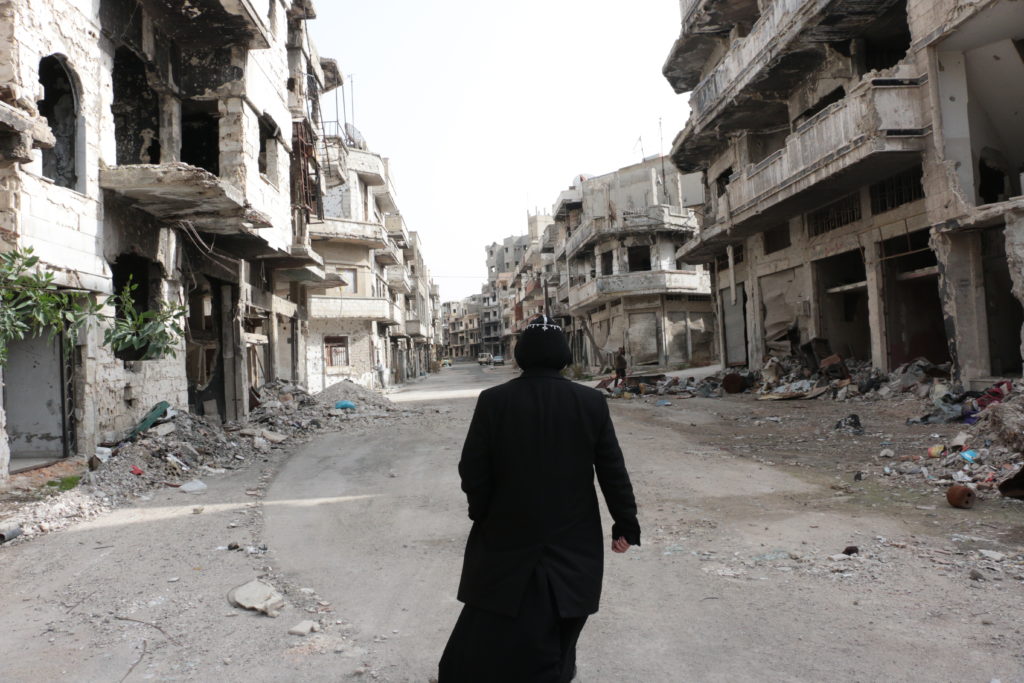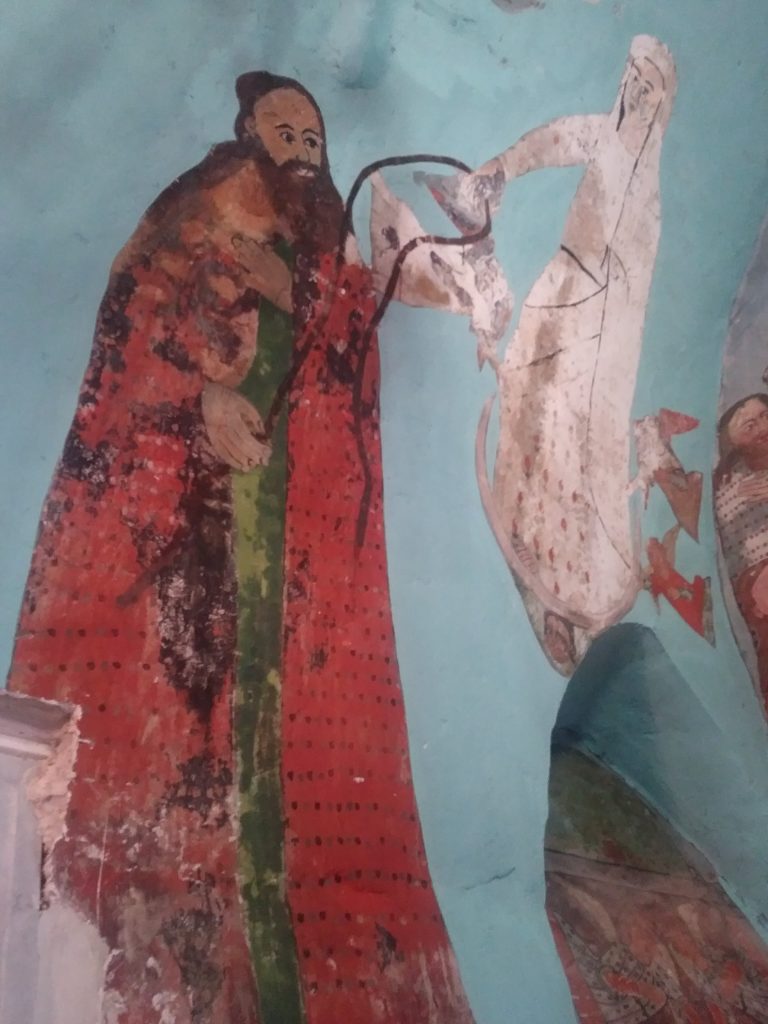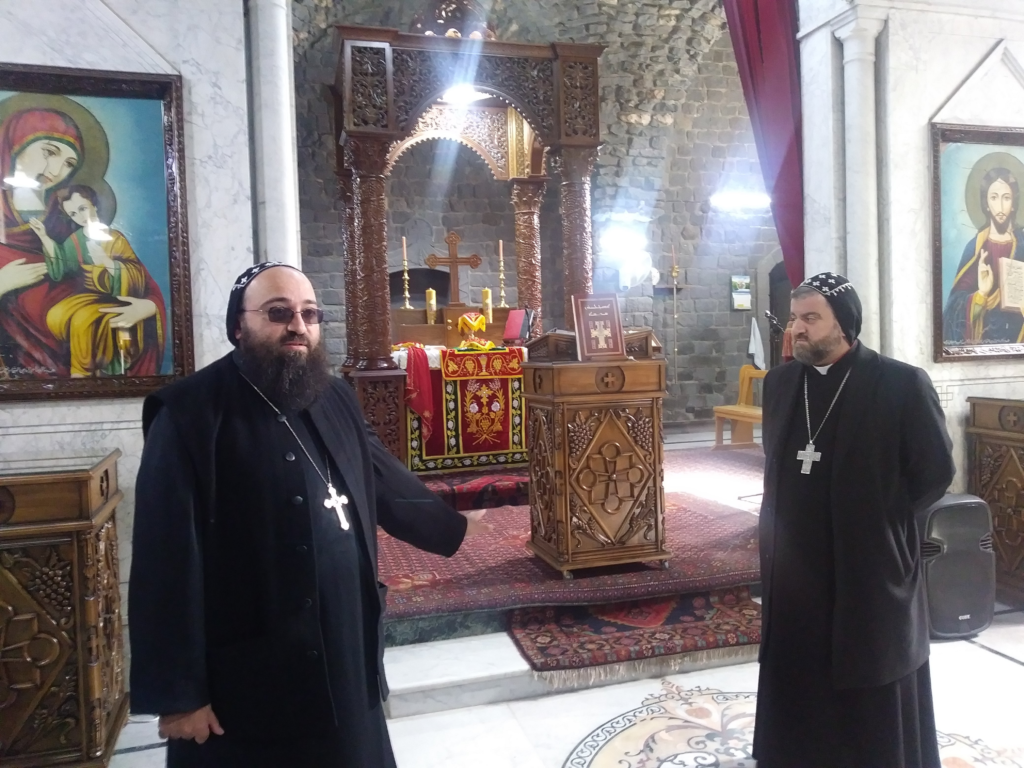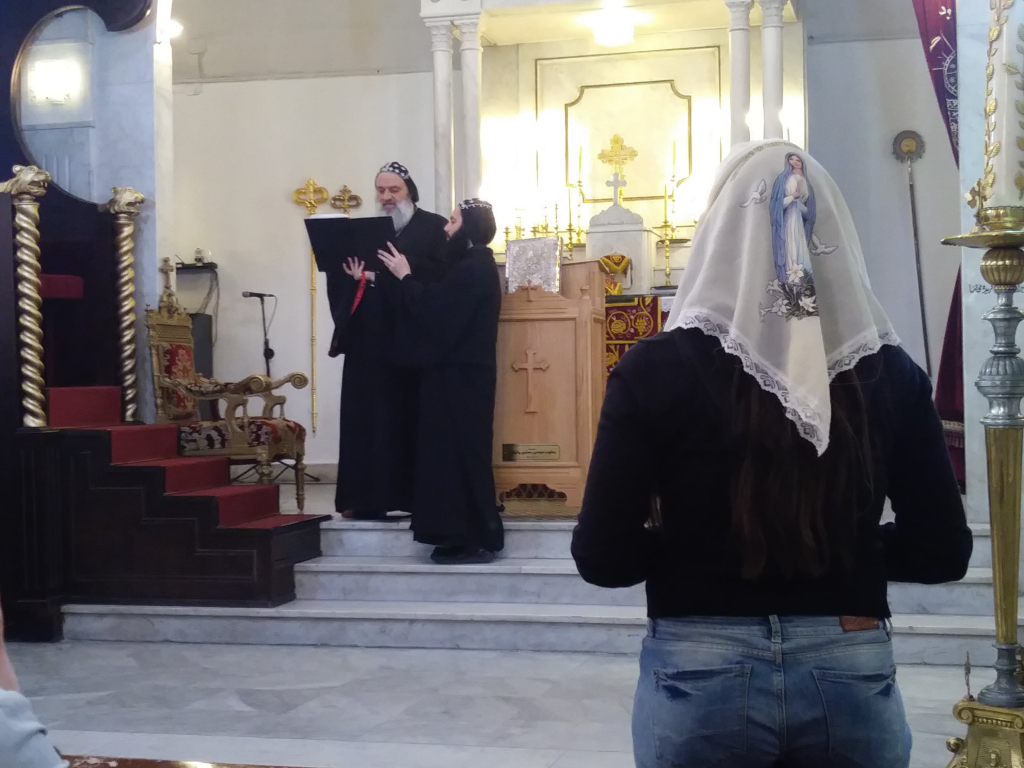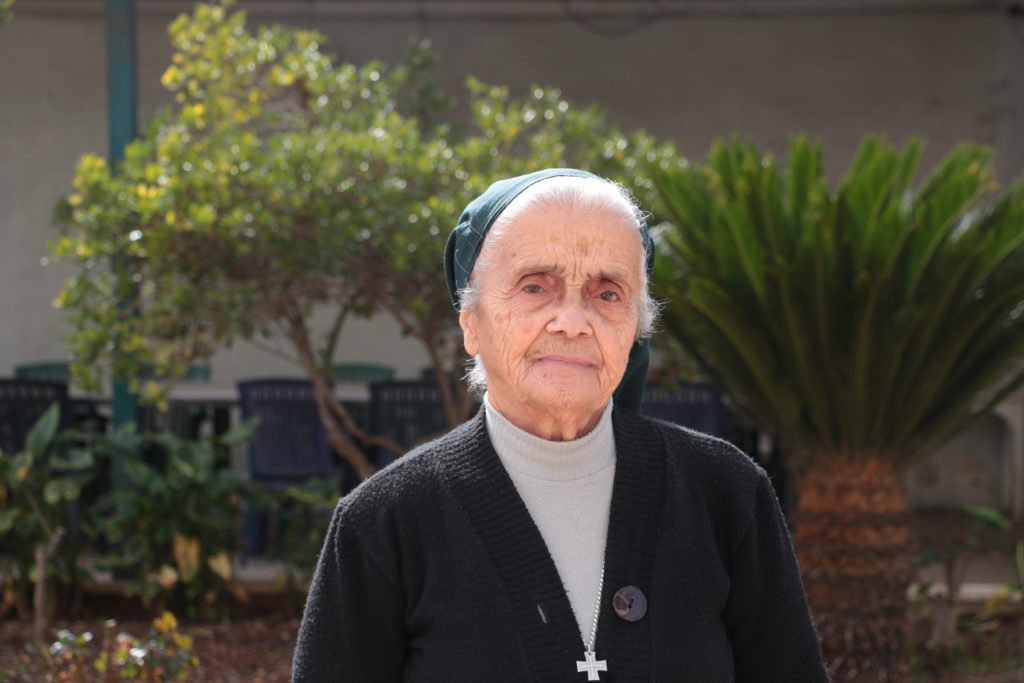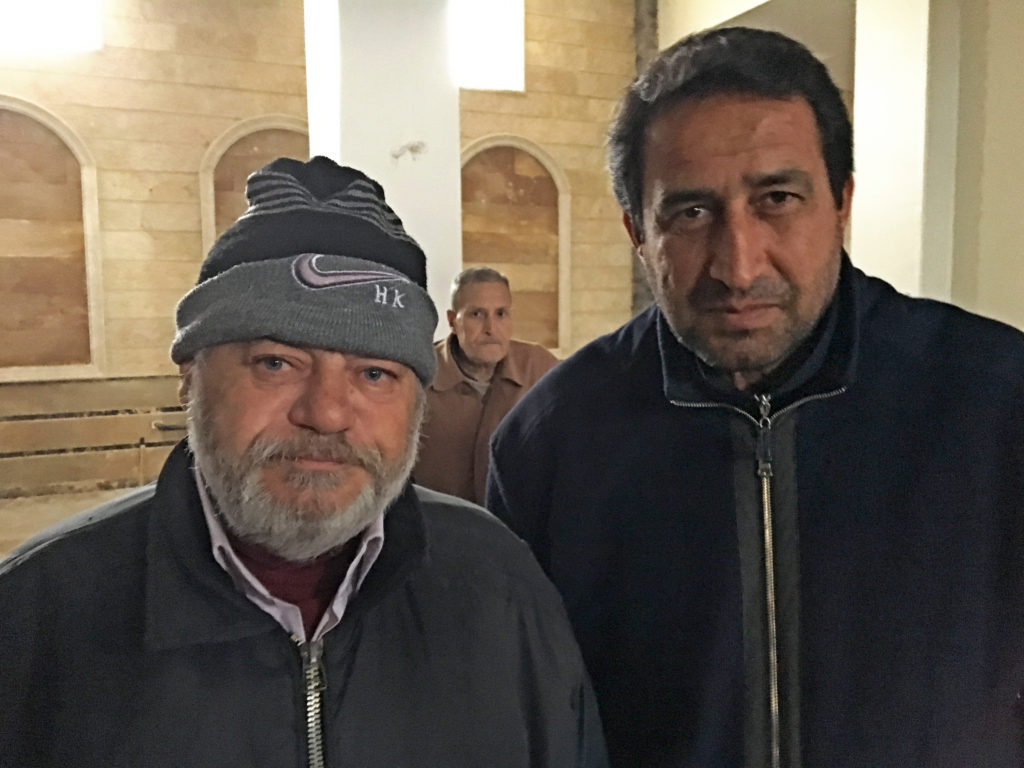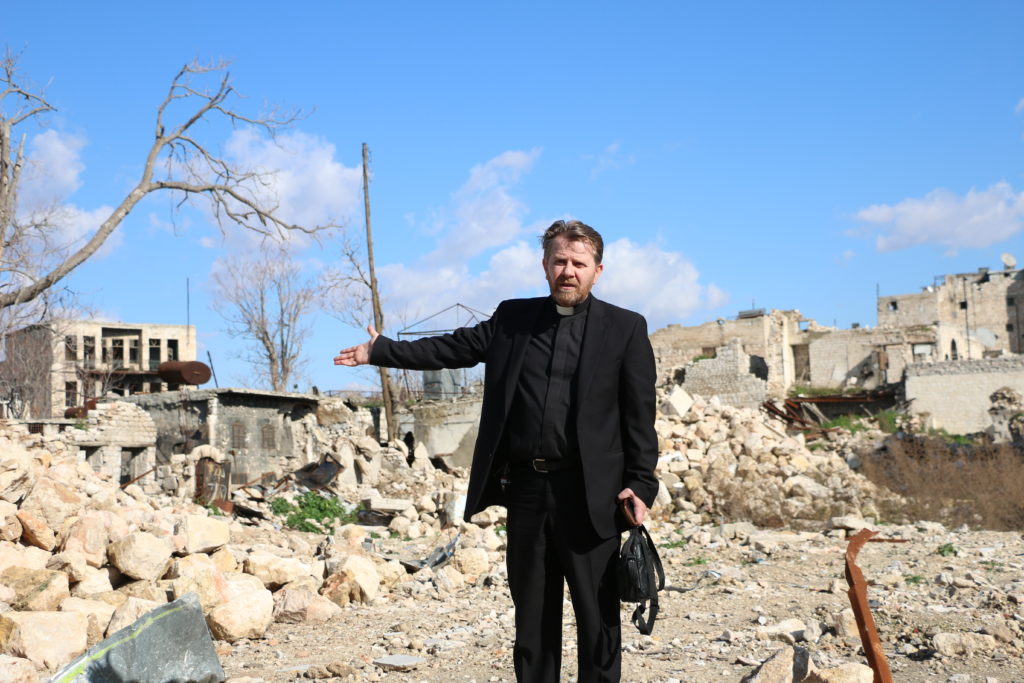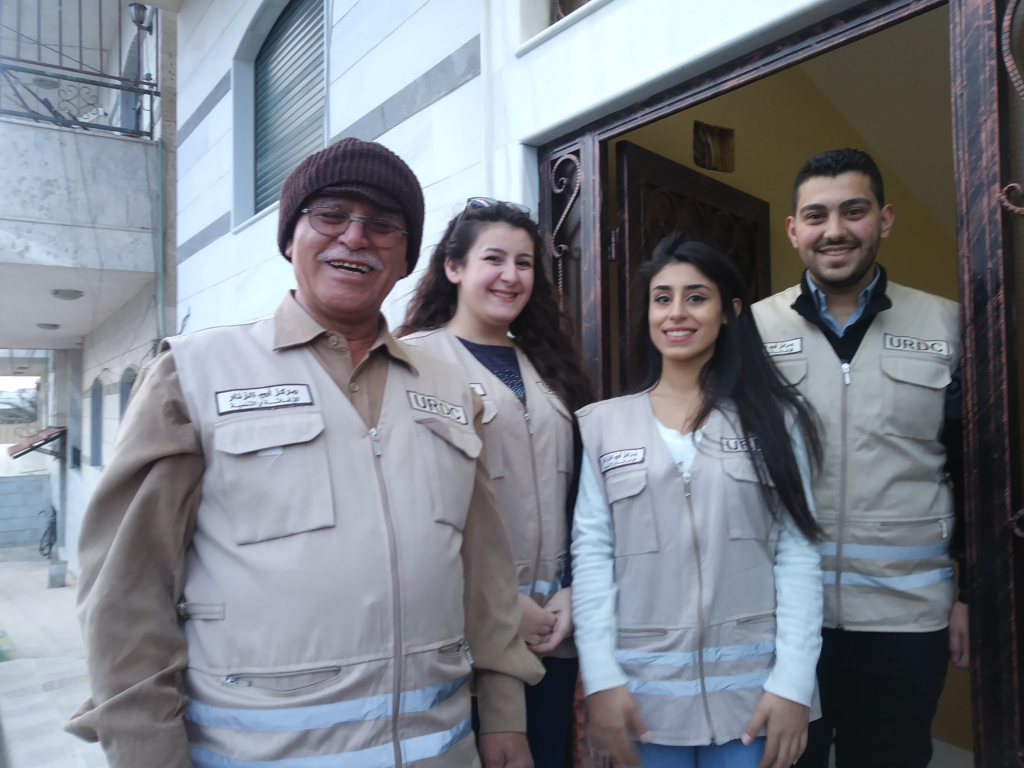Jesus’s ascension to heaven is traditionally a time when the church remembers and celebrates Christ’s lordship—Jesus’s rule over all earthly powers. It’s a celebration that God, in the words of Paul’s letter to the church at Ephesus, has raised Christ “from the dead and seated him at his right hand in the heavenly places, far above all rule and authority and power and dominion, and above every name that is named, not only in this age but also in the name to come” (Eph 1:20–21, NRSV). The resurrected Christ’s departure from his followers at the end of Luke’s Gospel, to sit at God’s right hand, sets the stage for Luke’s sequel of Acts. In the continuing story, Jesus’s disciples are sent out into mission, spurred by the confidence that the crucified and resurrected Jesus stands above all rule and authority, including the imperial authority of Rome. From Jerusalem, the apostles go out to join God’s mission under God’s rule: Paul travels multiple times around the Mediterranean to proclaim even in the heart of imperial power that Jesus is “above every name that is named”; Mark takes the good news to Egypt; and Thomas, according to Syrian Orthodox tradition, goes to India to tell of what God has done in Jesus.
The Feast of the Ascension lends itself to triumphal sermons. The Western church’s Ascension hymns certainly strike a triumphant note: “Sing We Triumphant Hymns!”; “Rejoice, the Lord Is King!”; “All Hail the Power of Jesus’ Name, Let Angels Prostrate Fall!” Speaking for myself, however, Paul’s claim that Jesus is now “far above all rule and authority and power and dominion” can sometimes feel less like assurance of God’s rule over the powers of sin, death, and destruction, and more like absence or abandonment.
This sense of God’s absence felt particularly acute to me in February 2018, when I was visiting Mennonite Central Committee (MCC) partners and disaster response projects in war-torn Syria. On the third day of our visit, I was asked to sit with a group of women in a village in central west Syria. These women receive monthly cash allowances from MCC through the Syrian Orthodox church. Some were Christian, others Muslim. They spoke quickly and with an intense desperation in hope that that someone would relay their stories to people who might make a difference. My dormant Arabic skills were taxed to the limit as these women shared about how husbands, uncles, or sons had been kidnapped, never to be seen again, with no corpse to bury, no finality of a funeral.
“There can be no peace in Syria until there is truth and justice for families whose loved ones were kidnapped,” one woman stressed, imploring me to communicate her message back to politicians in America. I fumbled for something that might resemble a coherent answer. Finally, another woman took pity on me and interrupted my hopelessly inadequate response, saying: “What you must understand is that every family in Syria has stories like these.”
Syrian Orthodox Bishop Selwanos walking through the destroyed Wadi al-Sayegh neighborhood of Homs. February 2018. MCC PHOTO/EMILY LOEWEN.
The sights of destruction and the stories of death, kidnapping, and displacement kept accumulating during our week in Syria as we traveled from Homs to Hama to Aleppo to Damascus. The scale of the devastation in Syria is hard to process intellectually, let alone emotionally. Over half of Syria’s pre-war population has been uprooted, with over eleven million people ending up either as refugees outside of Syria or as displaced persons within the country. Inside Syria, some families have been displaced two, three, or four times by ongoing fighting. More than two-thirds of the eighteen million people now living in Syria rely on humanitarian assistance to survive. Over six million Syrians face acute food insecurity. Less than half of Syria’s hospitals and clinics are fully functional, while a third of all schools have been damaged or destroyed.
This torrent of grim statistics felt unrelenting, and what we saw and heard gave disturbing reality to these numbers. In Homs, we drove by shelled-out and destroyed apartment buildings for kilometer after kilometer; entire sections of the city had been turned into mute ghost towns. We walked through the badly damaged Christian neighborhood of Wadi al-Sayegh in Homs, looking up at the remnants of a family’s kitchen, the cupboards still clinging to ruined walls.
Destroyed home in Wadi al-Sayegh neighborhood, Homs. February 2018.
MCC PHOTO/ALAIN EPP WEAVER.
In a village in the Qalamoun Valley, we visited with families who had fled to the village from all across Syria seeking safety. One woman, whom I will call Amina, shared how she had fled from Raqqa with her six children after Islamic State forces had taken over the city, which the self-proclaimed Islamic State declared the capital of its caliphate. Her oldest son, an eleven-year-old-boy, is the family’s only source of income; he dropped out of school and began working odd jobs to provide for his mother and younger siblings. The family receives a monthly food parcel from MCC through the village’s Islamic Relief Committee. Asked if she hoped one day to return to her native city of Raqqa, the mother replied with resignation: “There is nothing for me there.”
After visiting with Amina, we traveled to a nearby Christian village, home to a church founded in the third century and decorated with stunning eighteenth-century murals. It was in this village that I heard a story from the church’s history that became a touchstone for me throughout my time in Syria, a story I kept coming back to as I searched for signs of God’s rule within a landscape of devastation. As I studied the murals, I was able to decipher most of the figures and the stories from the Bible and church history they represented, but one image stumped me. I turned to the local Syrian Orthodox priest to ask who these figures were, and he proceeded to tell me the story of the zinaar, or “belt.”
Eighteenth-century painting of Thomas’s encounter with Mary, the Mother of the Belt, in a Syrian Orthodox church in a village in the Qalamoun Valley.
February 2018. MCC PHOTO/ALAIN EPP WEAVER.
The story goes like this: Jesus’s mother, Mary, had passed away in Jerusalem. Most of the disciples were in Jerusalem and present for the burial. Thomas, however, was in India proclaiming the gospel when he heard the news. He headed as quickly as possible to Jerusalem, fearing he would miss the burial. As he approached Jerusalem, distraught that he had missed saying farewell to Mary, Thomas encountered her in the air, accompanied by chariots and horses, being assumed into heaven. (Orthodox churches hold to the doctrine of Mary’s assumption, teaching that Mary was bodily taken, or assumed, into heaven following her death.) Thomas cried out to Mary, begging her for a tangible sign that he could take to the other disciples as proof that he had, in fact, encountered the Virgin Mother. In response, Mary gave him her zinaar, and Thomas continued on to Jerusalem, where he joyously shared with the other disciples about his encounter with Mary, showing the belt as proof.
Bishop Selwanos (r.) in the Syrian Orthodox Church of the Belt in Homs.
February 2018. MCC PHOTO/ALAIN EPP WEAVER
Since then, according to Syrian Orthodox tradition, the belt has been guarded in the Church of the Belt in Homs. Bishop Selwanos of Homs hosted us in the church, which had sustained damage from shelling during fighting between government and rebel forces a couple of years ago. For the Syrian Orthodox Church, its guardianship of the belt stands as a symbol of God’s faithfulness to the church over nearly two thousand years. For me, the story of the belt opened my eyes to the tangible signs of God’s enduring rule in Syria. Over the course of my week there, I witnessed numerous ways that the Syrian churches continue two millennia of joining God’s reconciling mission.
Throughout Syria, God’s rule is manifest as churches continue to gather to worship and give thanks to God. The number of Christians in Aleppo may have fallen from two hundred thousand before the war to thirty thousand today—with Syrian Christians joining Syrian Muslims in fleeing the country for safety—yet the Sunday we worshiped at the American Evangelical Church, the large sanctuary was full, and fifty children presented their monthly program of praise songs.
Syrian Orthodox Patriarch Ignatius Aphrem II presides over Lenten mid-day prayers in the Old City of Damascus. February 2018. MCC PHOTO/ALAIN EPP WEAVER.
In Damascus, shock waves from the Syrian government’s bombardment of Eastern Ghouta were rattling the walls and windows of the Syrian Orthodox Patriarchate in the Bab Touma neighborhood of Old City, but that did not prevent the Syrian Orthodox Patriarch, His Holiness Patriarch Ignatius Aphrem II, from leading Lenten noon prayers, with the Patriarchate’s priests continuing the church’s centuries-long worship in Jesus’s language of Aramaic. “The war has brought out the worst in us but also the best in us,” the Patriarch told us. Acknowledging the church’s dwindling numbers, he nevertheless insisted that “there is also little salt in food, and here we are, living as salt in this world.”
God’s rule in Syria is manifested in the embodied witness of those who protect the vulnerable. In Homs, Sister Valentine, a Catholic nun who directs a Presbyterian home for the elderly, told of how the home found itself between Syrian army and rebel forces, with shells lobbed over the home. Before the fighting began, when it became clear that the home for the elderly would be near the center for the fighting, Sister Valentine gathered the home’s staff. “I have decided to stay with the home’s residents who are unable to leave and who have nowhere to go,” she told her colleagues. She then gave the rest of the staff five minutes to decide whether to stay or leave: all stayed. Throughout the ensuing weeks of the fighting, Sister Valentine and the home’s janitor would head out during ceasefires to stock up on bread and other basic provisions for the home, all-too-aware that snipers routinely violated ceasefires.
Sister Valentine, Presbyterian Center for the Elderly, Homs. February 2018. MCC PHOTO/EMILY LOEWEN.
In Damascus, meanwhile, Rima and Lina, leaders of the L’Arche community for adults with intellectual and developmental disabilities, fretted about what would happen to the community’s members. Would the community’s caregivers choose to stay as shells fell regularly in the Old City? Or would they understandably choose to flee? Lina and Rima gathered with the caregivers to tell them there was no shame in leaving, that they should do what they felt called to do. The response from the caregivers was unanimous: “We will stay here until the end, every one of us.”
Kamal (r.) and Jamal (l.), in basement of a Greek Orthodox church in central Syria. February 2018. MCC PHOTO/J. RON BYLER.
God’s rule in Syria is revealed in Syrians reaching out beyond their communities to care for their neighbors, regardless of religion, ethnicity, family connections, or other differences. So, for example, in a primarily Christian village in central Syria, we met two displaced neighbors who care for each other and who testify to the church’s outreach beyond itself. In the basement of the town’s Greek Orthodox church, Jamal (on the right) told his story while standing next to his Christian friend and neighbor from Raqqa, Kamal. When Islamic State forces were approaching Raqqa, Jamal went to Kamal with the urgent plea that they both gather their families and flee for safety. Together, Jamal, Kamal, and their families made their way to their present refuge, a town where over the course of the war the original twelve thousand residents have opened their homes to thousands more Christian and Muslim Syrians displaced by the fighting. In this village, MCC has supported the churches in distributing regular food packages to the many displaced families in the village. Jamal underscored: “This is a good village, where the people give without discrimination between Christians and Muslims.”
In Aleppo, meanwhile, the Presbyterian church distributes monthly cash allowances along with MCC comforters and relief buckets to displaced Syrians, with some uprooted families—including Syrian Muslim families—housed in church buildings.
“This is not only our congregation’s ministry but also the ministry of the global church,” the Presbyterian pastor Ibrahim Nseir told us. “When we receive these comforters,” he continued, “we can feel not only their warmth but also the prayers sent with the blankets.” Many of the Presbyterian congregation’s own members have been displaced multiple times, Reverend Nseir noted. Asked why he had stayed in Aleppo during the worst of the fighting, as rebels almost completely encircled the city, Reverend Nseir responded: “Faith makes you do crazy things.”
Rev. Ibrahim Nseir on ruins of the Presbyterian church building in Aleppo. February 2018. MCC PHOTO/EMILY LOEWEN.
In Homs, the Syrian Orthodox Church’s outreach arm is called the Umm al-Zinaar Relief and Development Committee, or URDC. URDC takes its name from Mary, the Mother of the Belt, or, in Arabic, Umm al-Zinaar. Most of URDC’s volunteers are university students. Sawsan, the woman on the left, shared that her family had lost their home during the fighting in Homs, and now she felt called to reach out to other displaced families. The man on the right, Amir, told of the uncertainty he faces as he prepares to graduate: should he stay in his homeland and face mandatory conscription, or flee the country, like so many other Syrians? Yet while his future contains stark decisions, in the present he is dedicating himself to serving in Christ’s name.
Volunteers with the Umm al-Zinaar Relief and Development Committee in a village near Homs. February 2018. MCC PHOTO/ALAIN EPP WEAVER.
In the lives of Sawsan and Amir, of Sister Valentine and Reverend Ibrahim, of neighbors Jamal and Kamal, I saw tangible signs of God’s rule in Syria. Paul’s proclamation that the risen Jesus is “far above all rule and authority and power and dominion” calls us to see the devastated world—from which we can at times feel that God is all-too-starkly absent—with new eyes. Like Thomas clinging to the sign granted him by the Mother of the Belt, so we cling amid the world’s devastation to signs of God’s rule that is greater and more profound than the power and might of death-dealing militaries and militias.
The church in Syria has been discerning these signs now for nearly two thousand years, going out to join in God’s reconciling mission. In a sermon I preached the first Sunday of Lent in Aleppo, I asked the Armenian Evangelical congregation to pray for the church in the United States, that we might faithfully join in God’s mission just as the Syrian church has done. After the service, person after person told me they would keep our churches in their prayers.
Let us keep the Syrian churches in our prayers. And together with them, let us pray that we might be granted the vision to see God’s hidden rule amid the powers of death and sin, the grace to be conformed to that rule, and the courage to go out to join God’s reconciling mission. Amen.
Alain Epp Weaver directs Mennonite Central Committee’s Planning, Learning, and Disaster Response department. He is the author of Inhabiting the Land: Theologies of the Palestinian-Israeli Conflict (Eugene, OR: Cascade, 2018) and lives in Lancaster, Pennsylvania.
